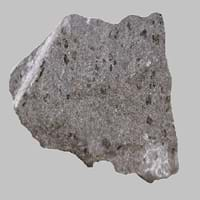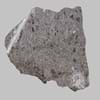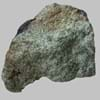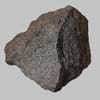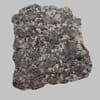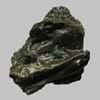Tephrite and Marl
Definition
Definition
Tephrite is an aphanitic to porphyritic textured, volcanic igneous rock
Marl is an unconsolidated sedimentary rock consisting of clay and lime
History
Origin
Germany
Unknown
Discoverer
Van Tooren
Unknown
Etymology
From Greek tephra, ashes from Indo-European base, to burn
From Old French marle, from Late Latin marglia
Class
Igneous Rocks
Sedimentary Rocks
Sub-Class
Durable Rock, Hard Rock
Durable Rock, Soft Rock
Family
Group
Volcanic
Not Applicable
Other Categories
Coarse Grained Rock, Fine Grained Rock, Medium Grained Rock, Opaque Rock
Fine Grained Rock, Opaque Rock
Texture
Texture
Aphanitic to Porphyritic
Earthy
Color
Black, Brown, Colourless, Green, Grey, White
Beige, Brown, Green, Grey, White
Maintenance
Less
Less
Durability
Durable
Durable
Water Resistant
Yes
Yes
Scratch Resistant
Yes
No
Stain Resistant
No
No
Wind Resistant
Yes
No
Acid Resistant
No
No
Appearance
Vesicular
Rough and Dull
Uses
Architecture
Interior Uses
Decorative Aggregates, Flooring, Homes, Interior Decoration
Decorative Aggregates, Floor Tiles
Exterior Uses
As Building Stone, As Facing Stone, Garden Decoration, Office Buildings
As Building Stone, Roof Tiles
Other Architectural Uses
Curbing
Curbing
Industry
Construction Industry
Landscaping
Cement Manufacture, Construction Aggregate, for Road Aggregate, Making natural cement, Raw material for the manufacture of mortar
Medical Industry
Not Yet Used
Not Yet Used
Antiquity Uses
Artifacts, Sculpture
Artifacts, Jewellery, Sculpture, Small Figurines
Other Uses
Commercial Uses
Production of Lime, Soil Conditioner
Creating Artwork, Soil Conditioner
Types
Types
Not Available
Clay Marl ,Blue Marl, Red Marl, High Bank Marl, Shell Layer Marl, Under Shell Layer Marl, Sand Marl, Green Marl, Grey Marl and Clayey Marl
Features
Host Rock for Lead
Generally rough to touch, Is one of the oldest rock, Splintery, Very fine grained rock
Archaeological Significance
Monuments
Not Yet Used
Not Yet Used
Famous Monuments
Not Applicable
Not Applicable
Sculpture
Used
Used
Famous Sculptures
Data Not Available
Data Not Available
Pictographs
Not Used
Used
Petroglyphs
Not Used
Used
Figurines
Used
Used
Fossils
Absent
Present
Formation
Formation
Tephrite is a fine-grained, hard rock which is a type of metasomatite, essentially altered basalt. It forms with or without crystallization, either below the surface as intrusive rocks or on the surface as extrusive rocks.
Marl forms when very fine-grained clay particles are deposited in water which settles at the bottom of water bodies and are compacted by overlying sediment; the water squeezes out and hence forming Marl rock.
Composition
Mineral Content
Alkali feldspar, Nepheline, Plagioclase, Pyroxene
Calcite, Clay, Dolomite, Gypsum, Micas, Pyrite, Quartz
Compound Content
CaO, Carbon Dioxide, MgO, Silicon Dioxide
Aluminium Oxide, NaCl, CaO, Iron(III) Oxide, Silicon Dioxide
Transformation
Metamorphism
Yes
No
Types of Metamorphism
Cataclastic Metamorphism, Contact Metamorphism, Impact Metamorphism, Regional Metamorphism
Not Applicable
Weathering
Yes
Yes
Types of Weathering
Biological Weathering, Chemical Weathering, Mechanical Weathering
Biological Weathering, Chemical Weathering
Erosion
Yes
Yes
Types of Erosion
Chemical Erosion, Coastal Erosion, Glacier Erosion, Sea Erosion, Water Erosion
Chemical Erosion, Coastal Erosion, Water Erosion, Wind Erosion
Properties
Physical Properties
Hardness
6.5
2-3
Grain Size
Medium to Fine Coarse Grained
Very fine-grained
Fracture
Uneven
Conchoidal
Streak
Bluish Black
White
Porosity
Very Less Porous
Highly Porous
Luster
Subvitreous to Dull
Dull
Compressive Strength
90.00 N/mm2
22
Not Available
Cleavage
Crenulation and Pervasive
Not Available
Toughness
2.4
2.6
Specific Gravity
2.86
2.2-2.8
Transparency
Opaque
Opaque
Density
2.8-2.9 g/cm3
2.4-2.8 g/cm3
Thermal Properties
Specific Heat Capacity
0.92 kJ/Kg K
10
Not Available
Resistance
Heat Resistant, Impact Resistant
Heat Resistant, Impact Resistant
Reserves
Deposits in Eastern Continents
Asia
Not Yet Found
India, Pakistan, Russia
Africa
Namibia, Uganda
Ethiopia, Kenya, Morocco, South Africa
Europe
Germany, Hungary, Italy, Portugal, Spain
Austria, France, Germany, Greece, Italy, Romania, Scotland, Spain, Switzerland
Others
Not Yet Found
Not Yet Found
Deposits in Western Continents
North America
USA
USA
South America
Not Yet Found
Colombia, Ecuador, Peru
Deposits in Oceania Continent
Australia
New Zealand, Western Australia
New South Wales, Victoria, Western Australia
All about Tephrite and Marl Properties
Know all about Tephrite and Marl properties here. All properties of rocks are important as they define the type of rock and its application. Tephrite belongs to Igneous Rocks while Marl belongs to Sedimentary Rocks.Texture of Tephrite is Aphanitic to Porphyritic whereas that of Marl is Earthy. Tephrite appears Vesicular and Marl appears Rough and Dull. The luster of Tephrite is subvitreous to dull while that of Marl is dull. Tephrite is available in black, brown, colourless, green, grey, white colors whereas Marl is available in beige, brown, green, grey, white colors. The commercial uses of Tephrite are production of lime, soil conditioner and that of Marl are creating artwork, soil conditioner.
|
||
|
||
|
